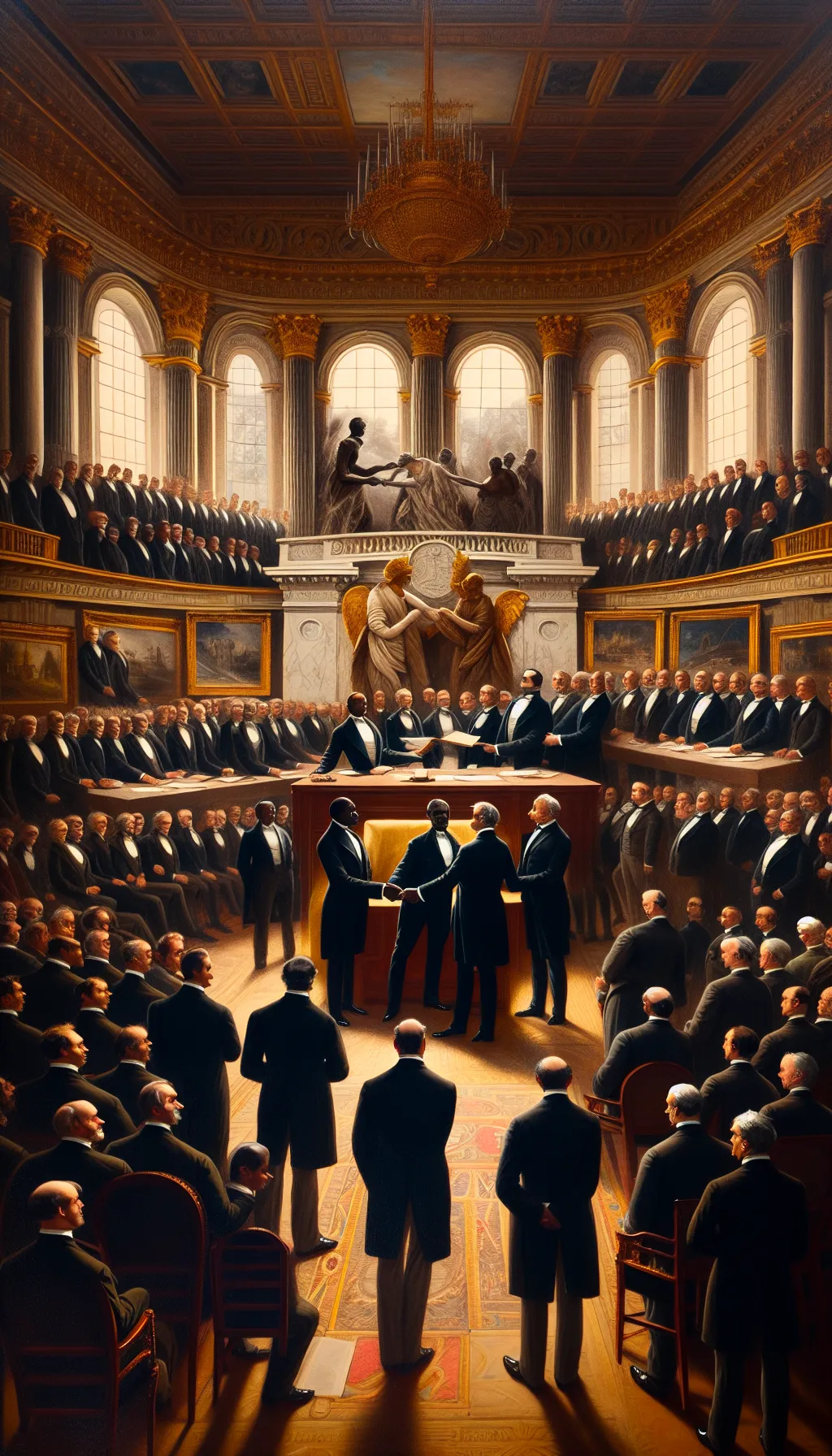United States – The Pact of Neutrality: The Clayton-Bulwer Treaty of 1850
TLDR;
- Event: The Clayton-Bulwer Treaty was signed on April 14, 1850, between the United States and the United Kingdom, aiming to prevent exclusive control over any future canal in Central America.
- Purpose: It ensured that any canal built would be neutral and open to all nations, preventing potential conflicts between the two powers.
- Controversy: The treaty faced criticism from both sides, with Americans viewing it as a restriction on U.S. expansion and the British as a means to sustain their influence.
- Legacy: It was eventually replaced by the Hay-Pauncefote Treaty (1901-1902), which granted the U.S. sole rights to construct and manage the Panama Canal.
–
Story
In the heart of the 19th century, as the world watched the great powers of the United States and the United Kingdom, a quiet yet monumental agreement was inked on April 14, 1850. The Clayton-Bulwer Treaty, signed in Washington, D.C., was a diplomatic dance of power and restraint, a pact that would shape the future of Central America.

The world was on the brink of a new era of connectivity. The idea of a canal slicing through the narrow waist of Central America was tantalizing, promising to revolutionize global trade routes. Both the United States and the United Kingdom had their eyes set on this prize, not exclusively in Nicaragua but for any future canal in the region, including potential routes in Panama or elsewhere.
Tensions simmered as both nations vied for influence in the region. The specter of conflict loomed large, threatening to destabilize not just Central America, but the balance of power across the globe. It was in this charged atmosphere that the Clayton-Bulwer Treaty emerged as a bilateral agreement.
The treaty was a compromise. It stipulated that neither the United States nor the United Kingdom would seek exclusive control over any canal that might be constructed. Instead, they agreed to work together, ensuring that the canal would remain neutral and open to all nations. This agreement aimed at preventing future disputes rather than resolving an immediate crisis.
Yet, the treaty was not without its critics. Many Americans, especially expansionists, resented it as a limitation on U.S. influence. The British, meanwhile, saw it as a way to maintain their regional dominance. The true impact of the Clayton-Bulwer Treaty would only be realized decades later, as the world moved closer to the dream of a transoceanic canal, and it was replaced by the Hay-Pauncefote Treaty (1901-1902), which allowed the U.S. to build and control the Panama Canal alone.
The signing of the Clayton-Bulwer Treaty was more than just a diplomatic agreement; it was a testament to the power of negotiation and the enduring quest for peace in a world on the cusp of transformation.
–
| Would a different approach to the canal have changed the course of history in Central America? |